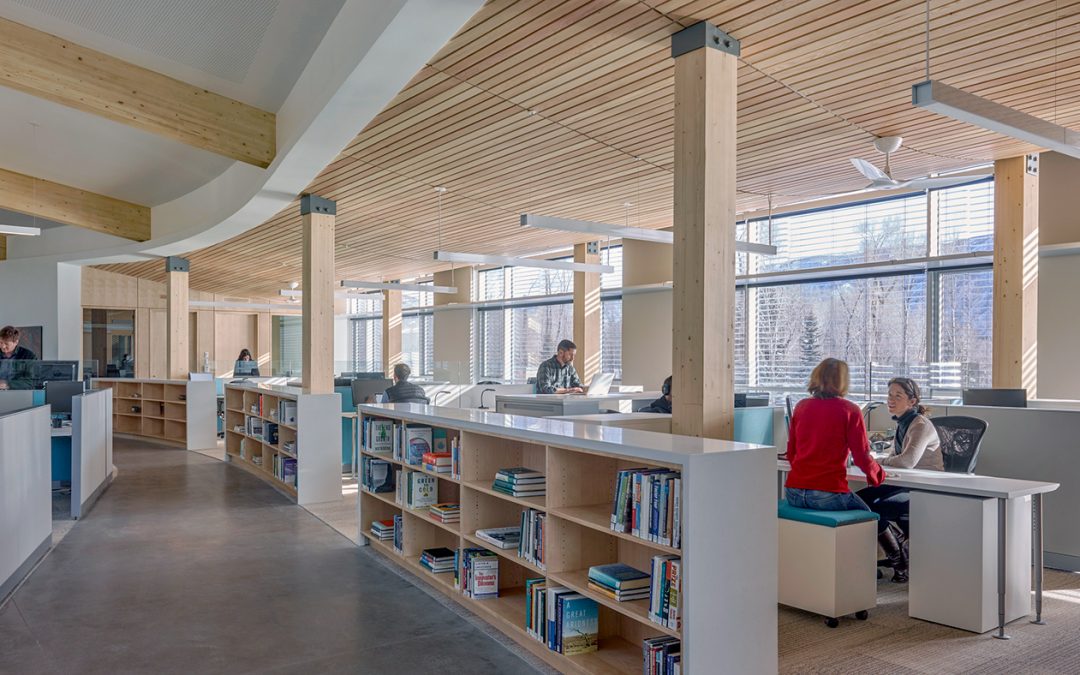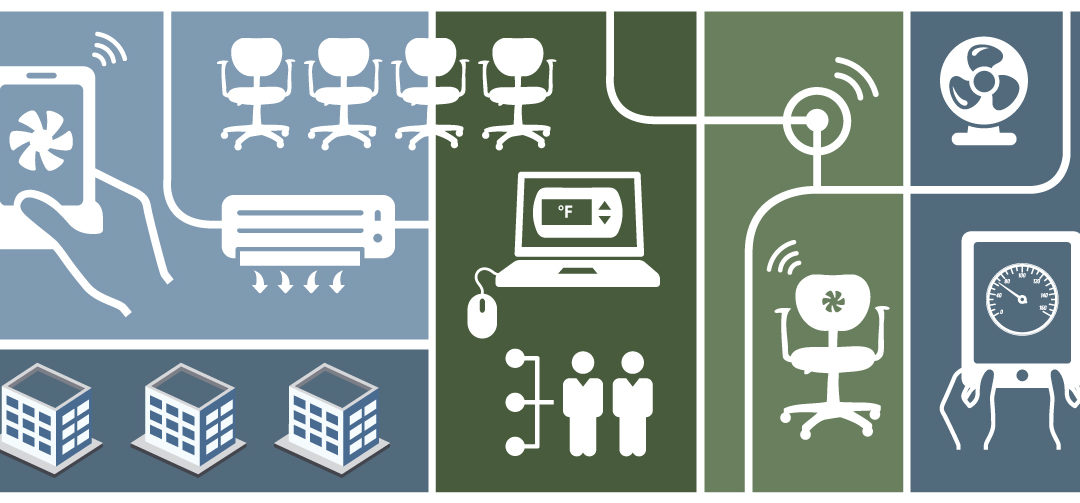
David Lehrer May 15, 2019
This year marks the 25th anniversary of the publication of a seminal paper from Rocky Mountain Institute, “Greening the Building and the Bottom Line,” making the case that green buildings’ unique features may improve employee productivity. Since then interest in this topic has remained strong, and several studies by CBE and others have contributed to our collective understanding of workplace productivity; in this post we describe our related work with a focus on key variables.
More

Thomas Parkinson February 14, 2019
Companies aspiring to sustainability and wellness have focused on managing workplace indoor environmental quality (IEQ), however undertaking IEQ measurements in a reliable manner can be challenging. In this post we discuss why continuous monitoring technologies are ideal for evaluating building IEQ performance.
More

Centerline Team October 15, 2018
Now in its twelfth year, the Livable Buildings Award recognizes projects that demonstrate high occupant satisfaction, excellent design, and innovative operation strategies. This year, we are pleased to announce the Rocky Mountain Institute Innovation Center as the top winner, with an honorable mention for the Pomona College Seaver Laboratory and Andrew Science Hall.
More

Centerline Team October 15, 2018
This spring, CBE’s research team was joined by post-doctoral researcher Thomas Parkinson, a leading expert on thermal perception in dynamic environments. Thomas earned his Ph.D. at the University of Sydney where he studied with long-standing CBE research collaborator Prof. Richard de Dear. He later became a lecturer there until his journey east to UC Berkeley.
More

David Lehrer July 16, 2018
CBE research has quantified what we all know intuitively: ceiling fans can provide acceptable comfort at temperatures that otherwise would be stifling. This enables passive solutions in milder climates, and may reduce the reliance on air conditioning in climates where passive solutions alone are not sufficient.
More

David Lehrer March 14, 2018
The emerging trend toward smart electric vehicles is creating new opportunities for synergistic innovations that are applicable to both buildings and cars. Model-based control concepts, greatly advanced by the automotive sector, are now being tested in the control of complex commercial buildings. These synergies, what we might call the building-automotive nexus, are also reflected in CBE’s body of research on thermal comfort.
More

Centerline Team February 15, 2018
The emerging Internet of Things offers opportunities to improve how we design, measure and operate buildings. CBE’s research team conducted a six-month field demonstration of a system using IoT-connected heated and cooled office chairs. Results demonstrated high levels of comfort seen in few buildings. In addition, the data from occupants’ use of the chairs can be used to predict thermal comfort more accurately than methods previously available.
More

Lindsay T. Graham January 18, 2018
Every day we leave traces in our wake that provide clues as to who we are. The way we talk, the music, movies, and books we like, the possessions we own, and even the spaces (both virtual and physical) we craft and maintain shed light on not only who we are today, but also who we will likely be in the future.
More

Centerline Team January 17, 2018
An important goal at CBE is to provide tools to assist industry professionals to create energy efficient and comfortable buildings. In 2013 we first launched the online CBE Thermal Comfort Tool as a way to help practitioners predict thermal comfort in buildings, based on ASHRAE Standard 55. We are excited to announce expanded capabilities in the most recent version of the tool.
More

Centerline Team November 28, 2017
CBE’s research team recently completed a project with goals of making buildings occupant-responsive in real time, and addressing outdated rules-of-thumb that lead to poor energy performance and occupant comfort. Findings demonstrated that “personal comfort” chairs led to comfort satisfaction for nearly all test subjects. The project team also developed and tested innovative HVAC control methods offering significant energy saving potential.
More










